Forums
- Forums
- Duggy's Reference Hangar
- USAAF / USN Library
- SABRE ANCESTOR: FJ-1 FURY
SABRE ANCESTOR: FJ-1 FURY
Post a reply
- Go to Previous topic
- Go to Next topic
- Go to Welcome
- Go to Introduce Yourself
- Go to General Discussion
- Go to Screenshots, Images and Videos
- Go to Off topic
- Go to Works in Progress
- Go to Skinning Tips / Tutorials
- Go to Skin Requests
- Go to IJAAF Library
- Go to Luftwaffe Library
- Go to RAF Library
- Go to USAAF / USN Library
- Go to Misc Library
- Go to The Ops Room
- Go to Made in Germany
- Go to Campaigns and Missions
- Go to Works in Progress
- Go to Juri's Air-Raid Shelter
- Go to Campaigns and Missions
- Go to Works in Progress
- Go to Skinpacks
- Go to External Projects Discussion
- Go to Books & Resources
-
13 years agoThu Nov 29 2012, 11:14pm
 Main AdminBy the closing years of World War II, jet propulsion was clearly the way of the future for high-speed combat aircraft. North American Aircraft (NAA) had achieved great success with their P-51 Mustang, arguably the best operational piston-engine fighter of the war, and wanted to take on the challenge of jet propulsion. In late 1944, NAA began a design study under the designation "RD 1265" for the company's first jet fighter, proposing the aircraft to the US Navy. On 1 January 1945, the company received a contract from the Navy for 100 of these fighters, which was given the company designation "Model NA-134" and the Navy designation "FJ-1".
Main AdminBy the closing years of World War II, jet propulsion was clearly the way of the future for high-speed combat aircraft. North American Aircraft (NAA) had achieved great success with their P-51 Mustang, arguably the best operational piston-engine fighter of the war, and wanted to take on the challenge of jet propulsion. In late 1944, NAA began a design study under the designation "RD 1265" for the company's first jet fighter, proposing the aircraft to the US Navy. On 1 January 1945, the company received a contract from the Navy for 100 of these fighters, which was given the company designation "Model NA-134" and the Navy designation "FJ-1".
The "XFJ-1", as the prototype NA-134 was designated, flew in late 1946. It was a stubby fat cigar with straight wings and an air intake in the nose, powered by a General Electric (GE) TG-180 / J35-GE-2 turbojet, with 16.7 kN (1,700 kgp / 3,750 lbf) thrust. The first production FJ-1 "Fury" was delivered in early 1948, and was fitted with an Allison-built J35. Some sources claim the J35 was a US copy of the de Havilland Goblin centrifugal-flow engine, but in fact the J35 an indigenous American axial-flow design, though it did leverage off British technology. The Goblin was built by Allis-Chalmers as the "J36", but the J36 but was never produced in quantity and never powered an operational aircraft
The FJ-1's pilot sat in a bubble canopy that was placed high to provide a good all-round view. The little fighter was armed with six 12.7 millimeter (0.50 caliber) Browning machine guns, arranged with three guns on each side of the nose. The fighter featured wingtip drop tanks, with a capacity of 625 liters (165 US gallons) each, though as it turned out the wing wasn't rigid enough to handle them. The FJ-1 had an interesting feature in that it could "kneel" down on its nosewheel. The rational was said to be to facilitate carrier stowage, but it may have also been done to ease servicing. Although the FJ-1's appearance didn't suggest it, the fighter leveraged heavily off P-51 technology, particularly in the design of its wing.
NORTH AMERICAN FJ-1 FURY:
_____________________ _________________ _______________________
spec metric english
_____________________ _________________ _______________________
wingspan 11.63 meters 38 feet 2 inches
wing area 20.53 sq_meters 221 sq_feet
length 10.48 meters 34 feet 5 inches
height 4.52 meters 14 feet 10 inches
empty weight 4,100 kilograms 8,845 pounds
loaded weight 7,075 kilograms 15,600 pounds
max speed at altitude 880 KPH 550 MPH / 475 KT
service ceiling 9,750 meters 32,000 feet
range 2,410 kilometers 1,500 MI / 1,305 NMI
_____________________ _________________ _______________________
Despite the fact that the FJ-1 won the Bendix Trophy in 1948, it was clearly outdated even as it was being delivered, and the production was cut to a total of 30 machines. One US Navy squadron was equipped with the Fury for about a year, with the aircraft passed on to reserve duty for transition training in 1949.
Below the prototype, showing the kneeling nose gear.
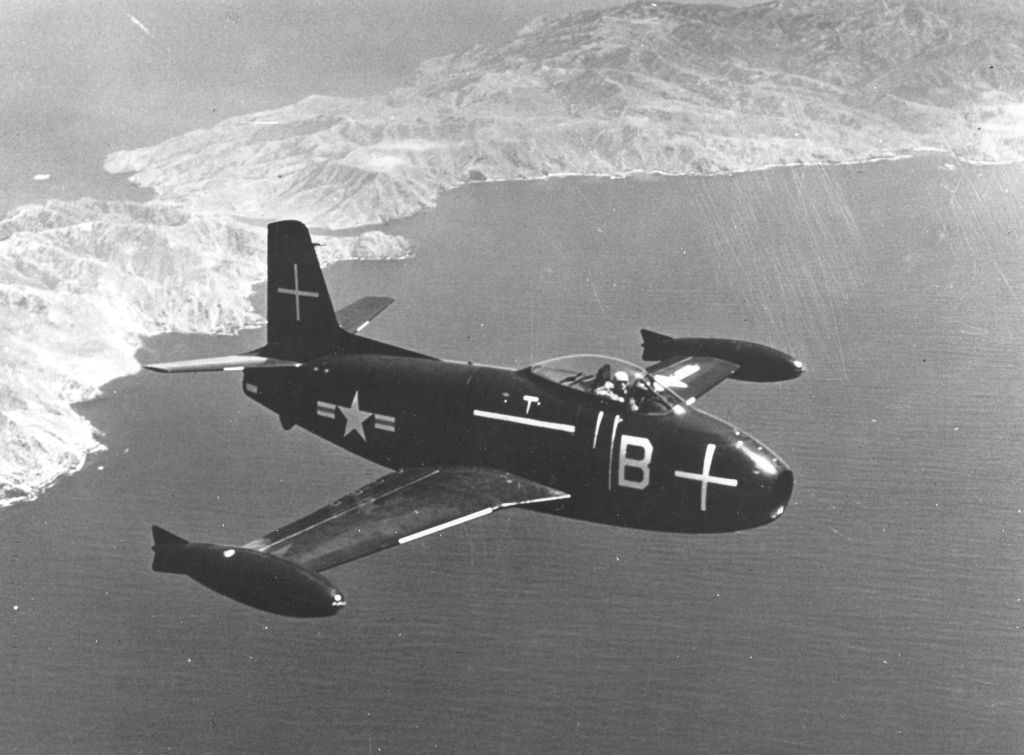
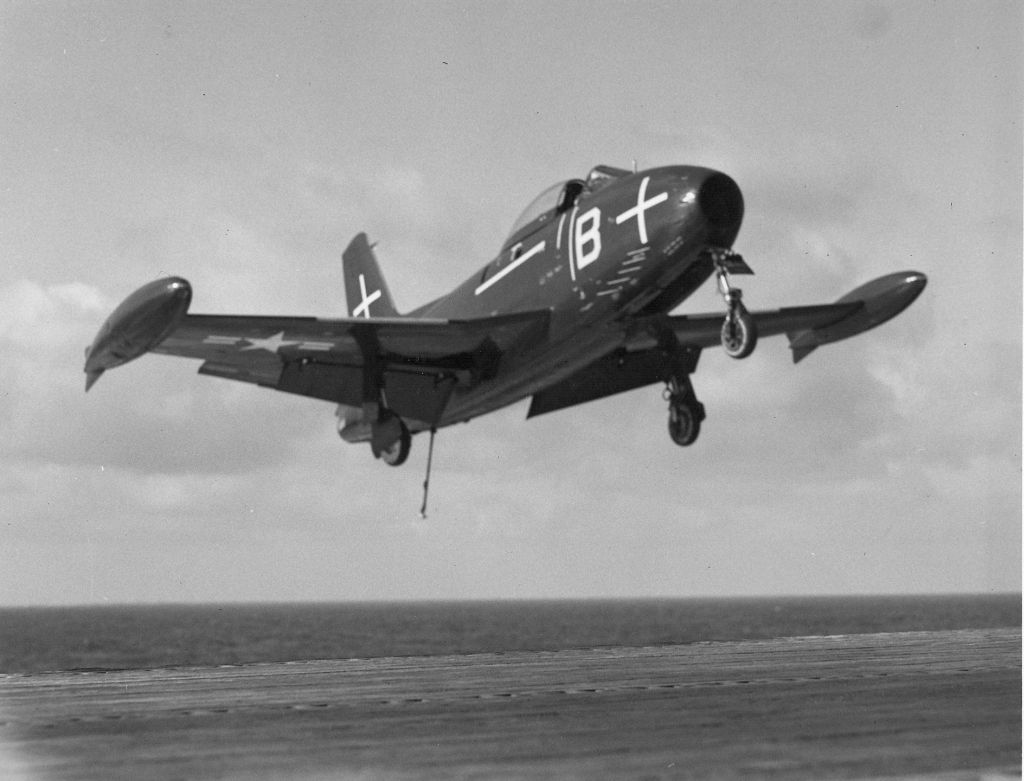
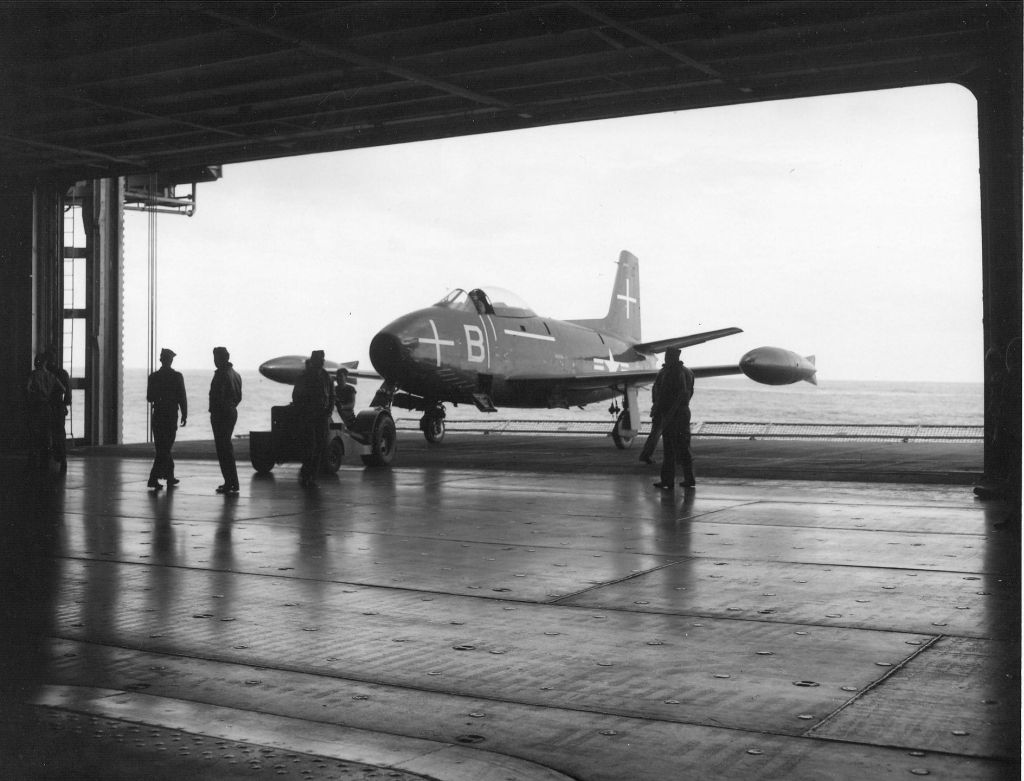

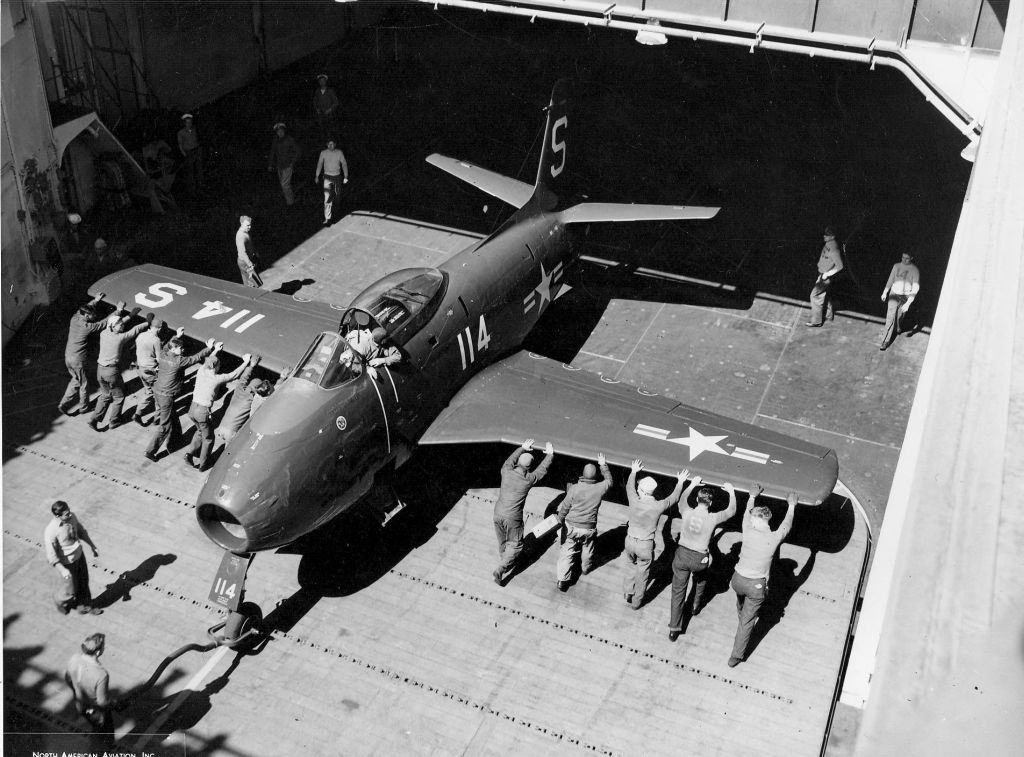
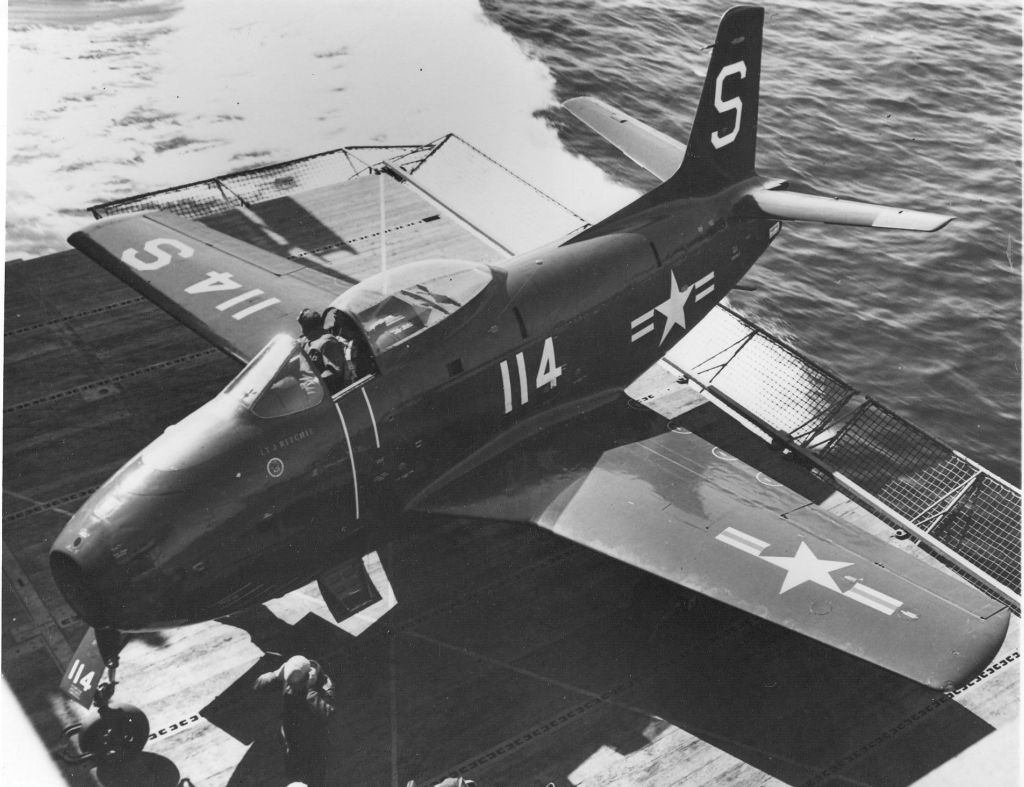
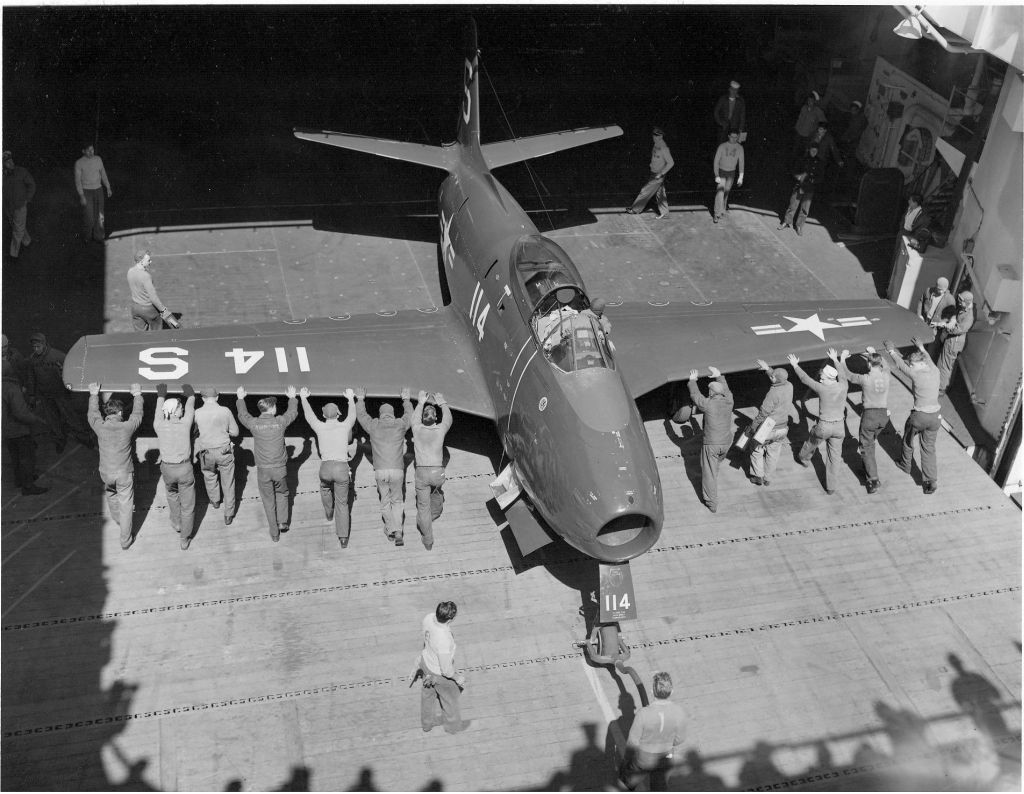
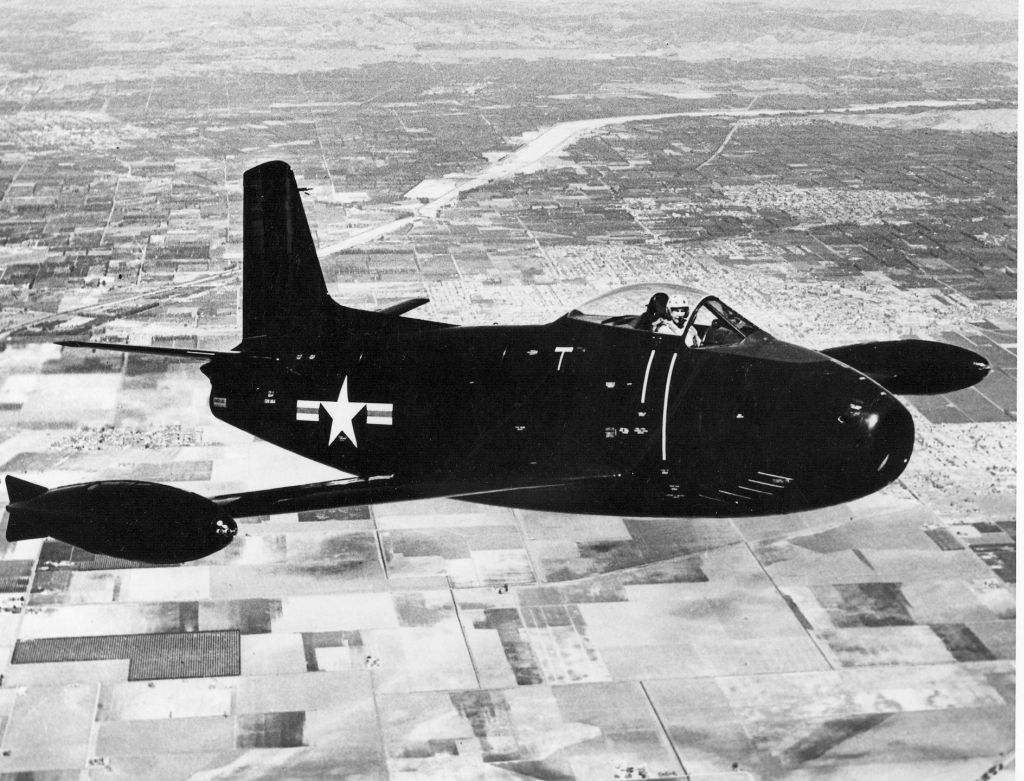
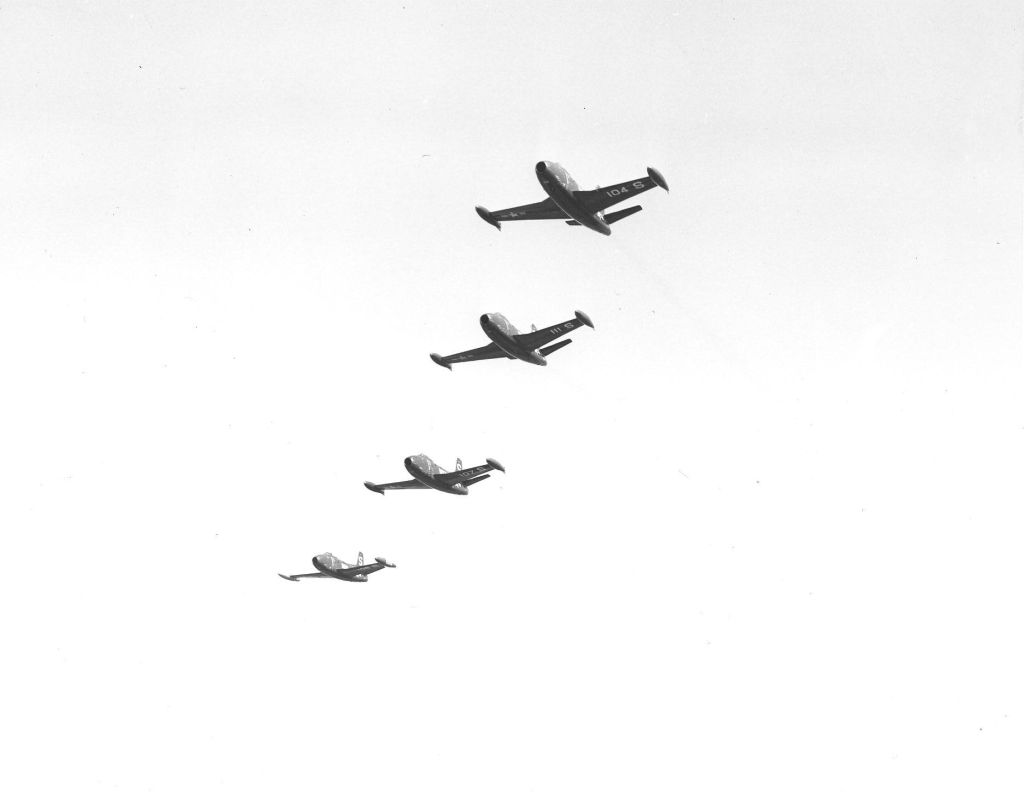
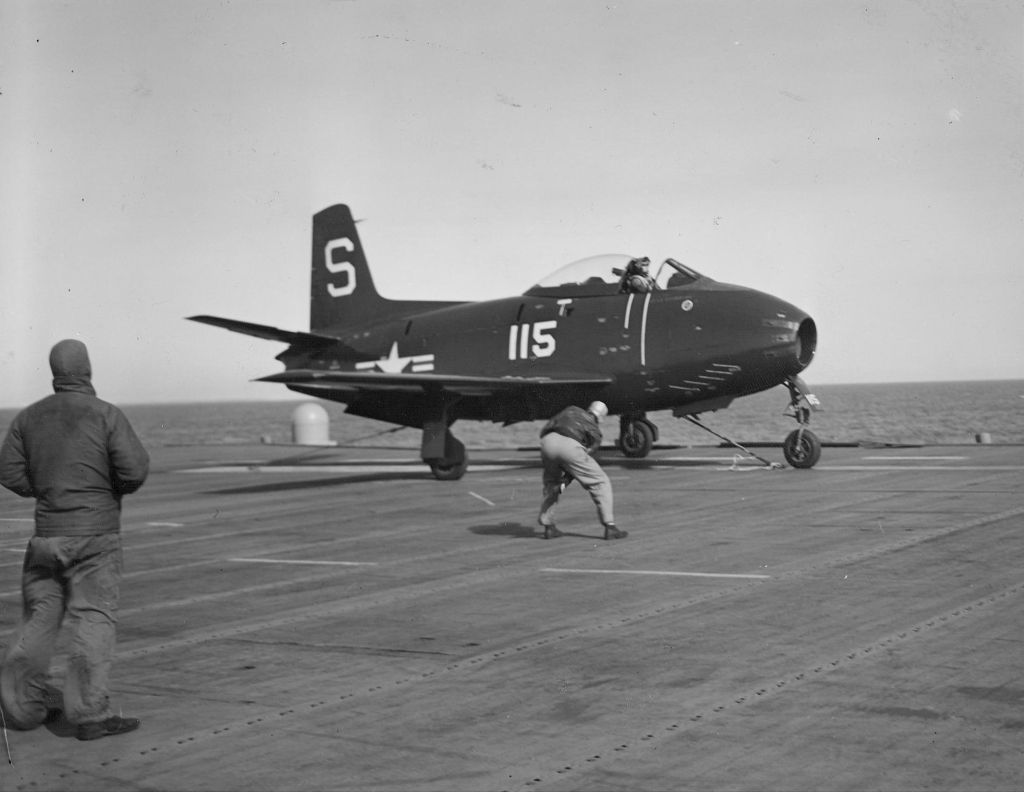
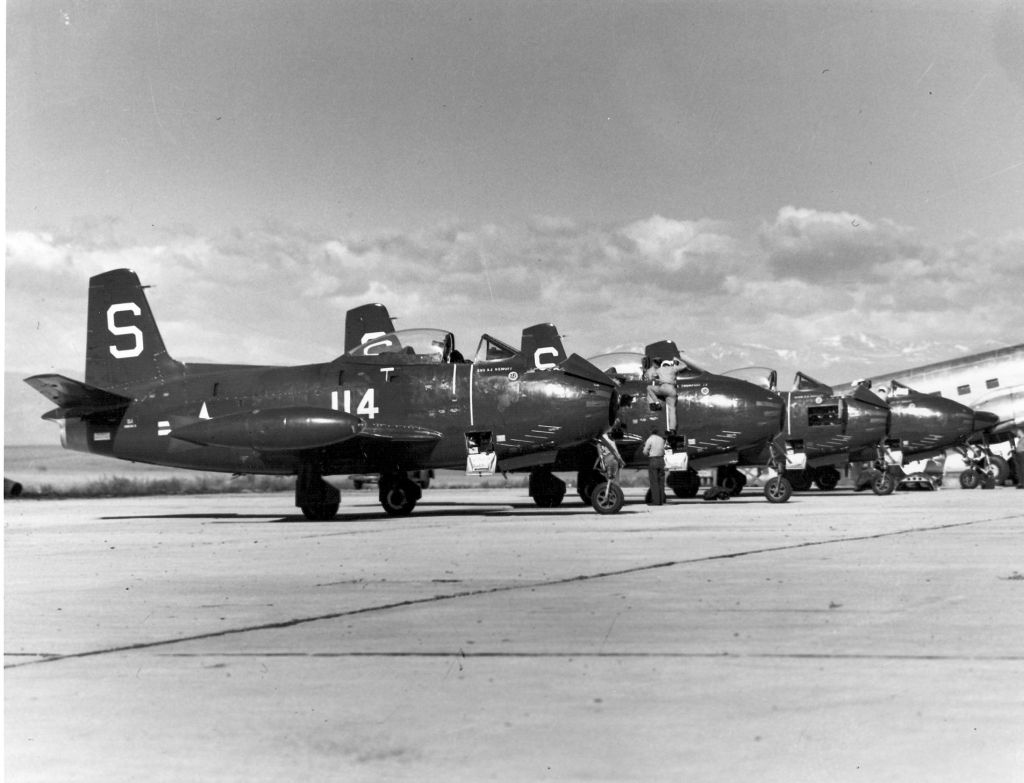
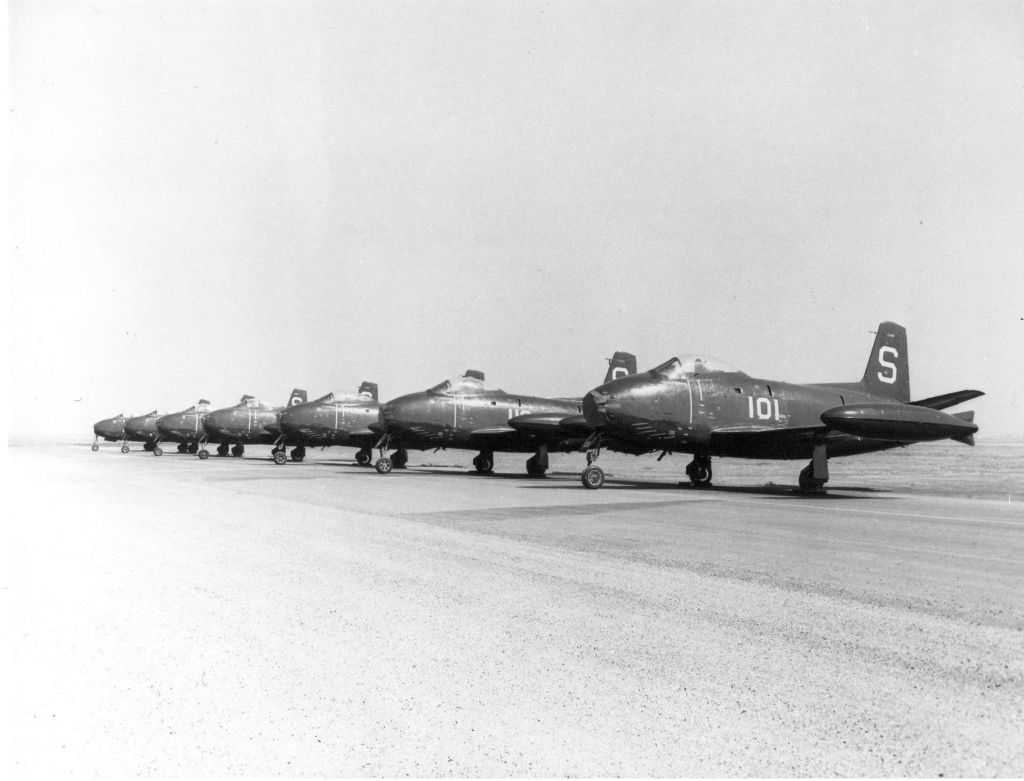
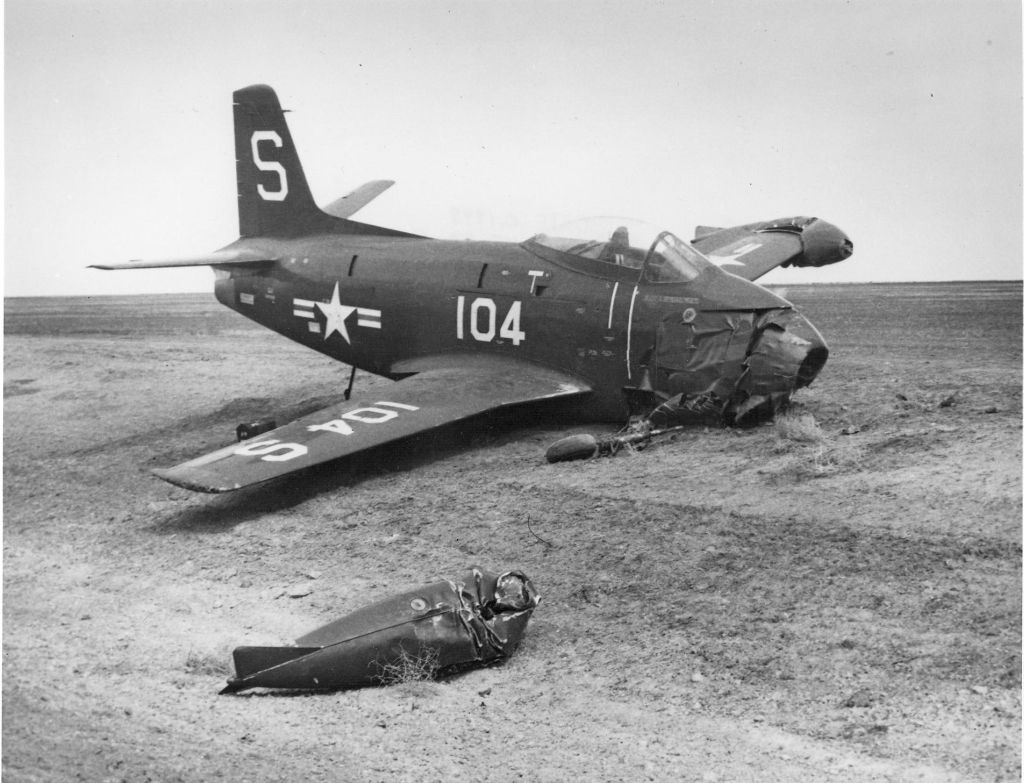
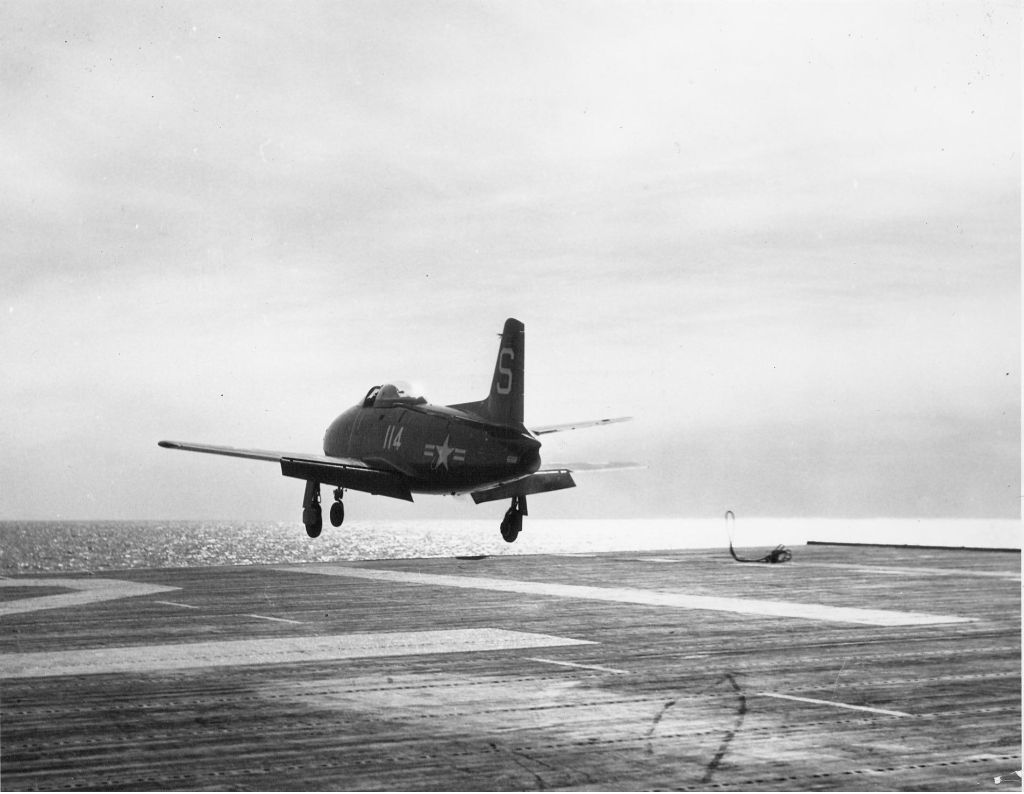
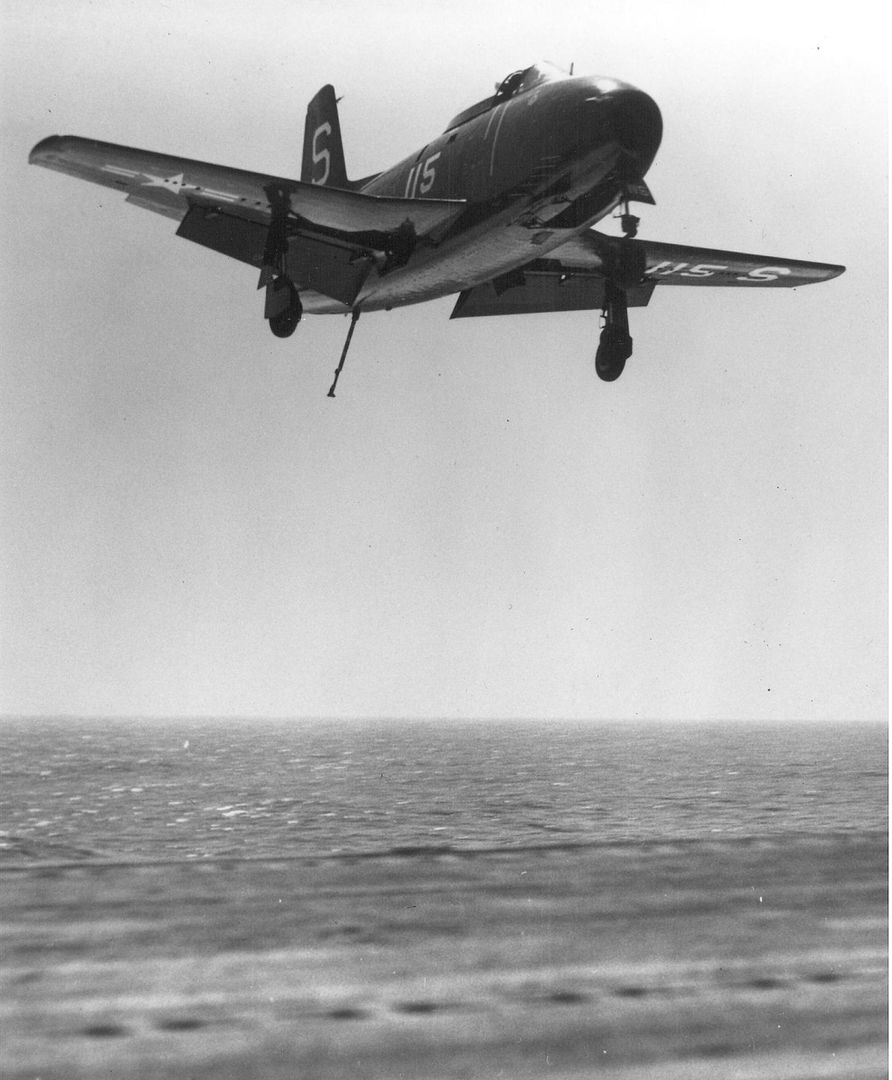
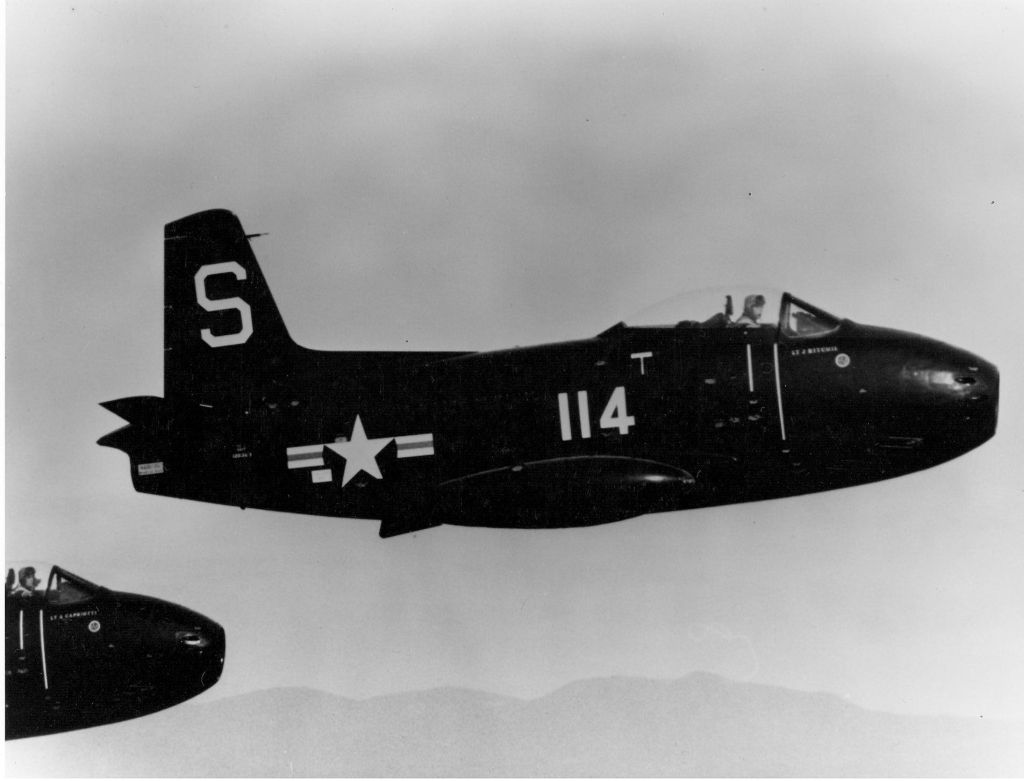
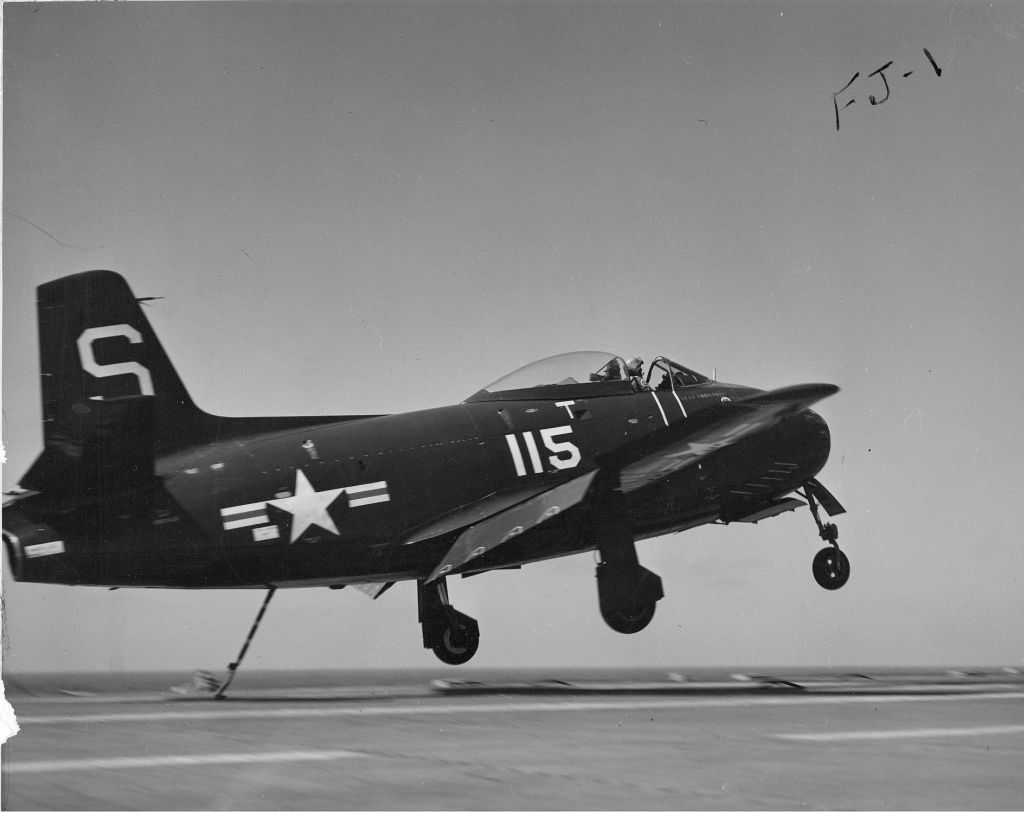
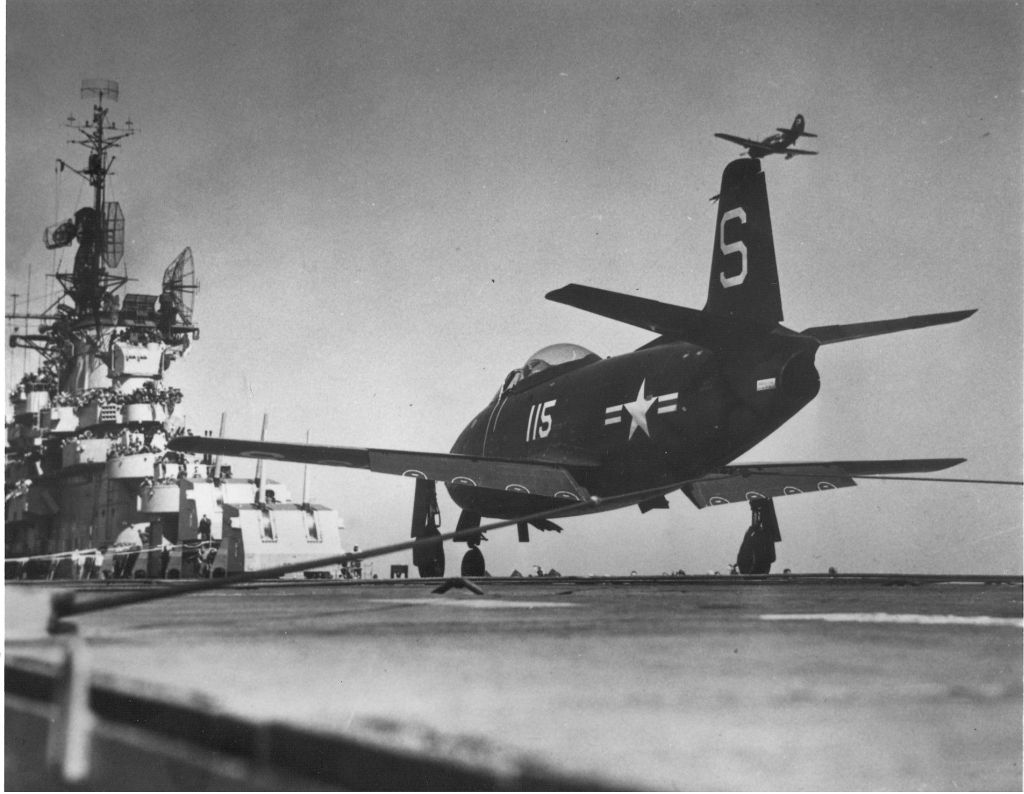
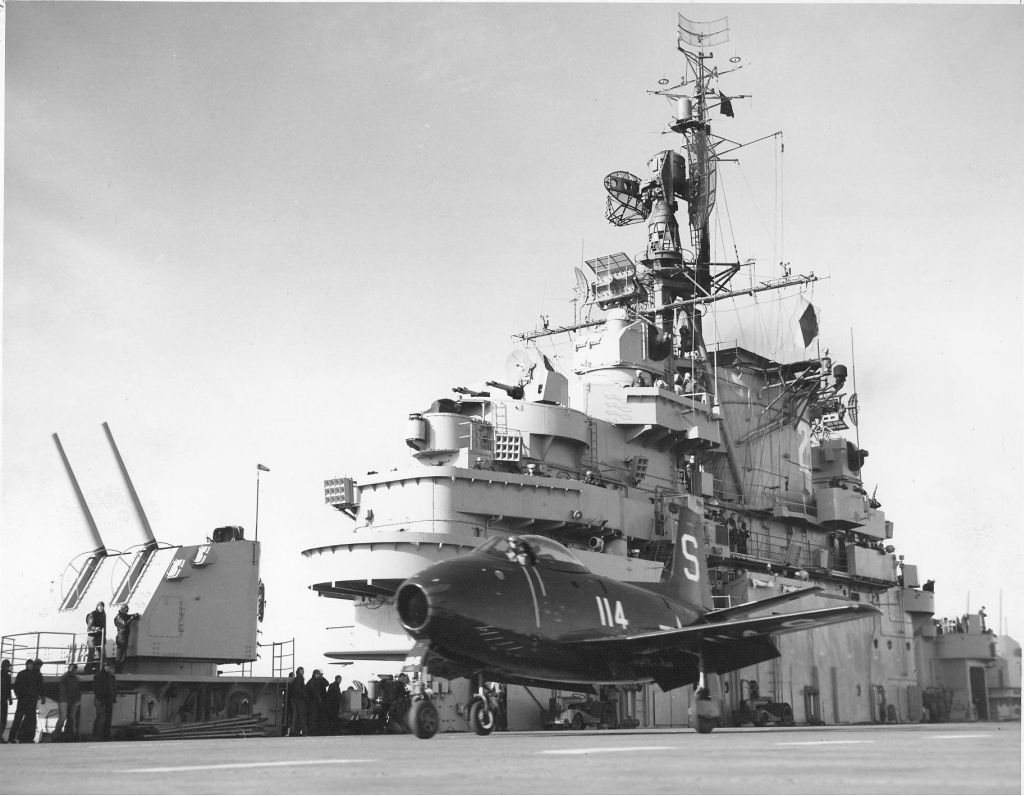

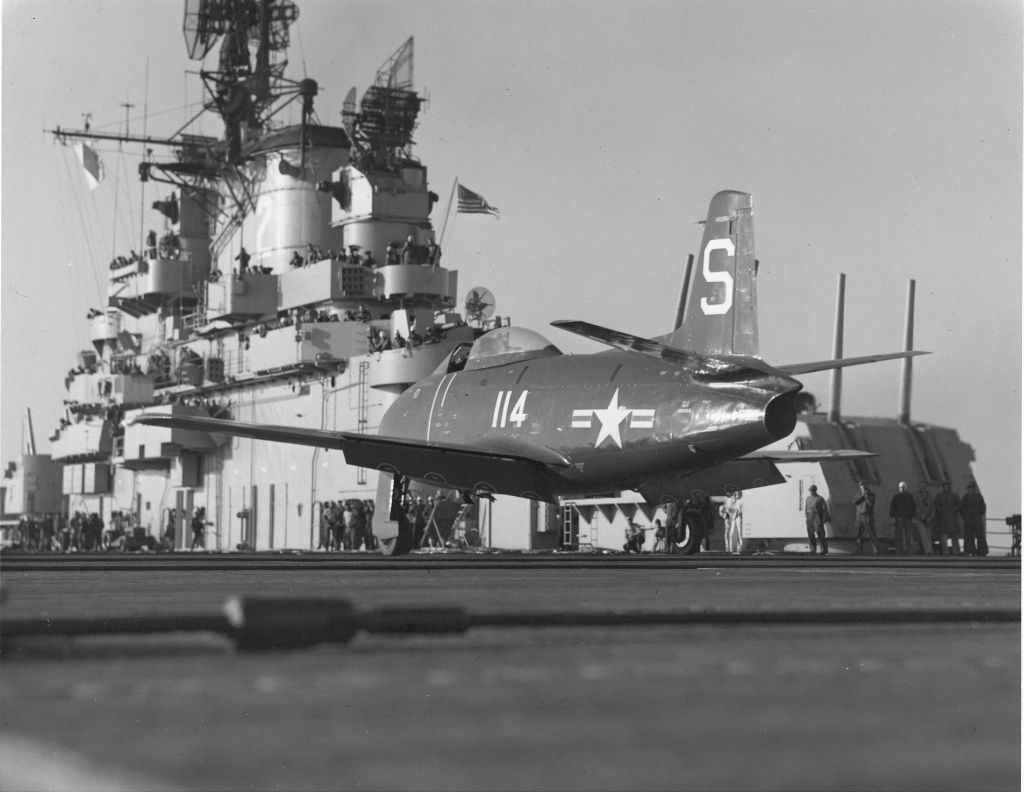
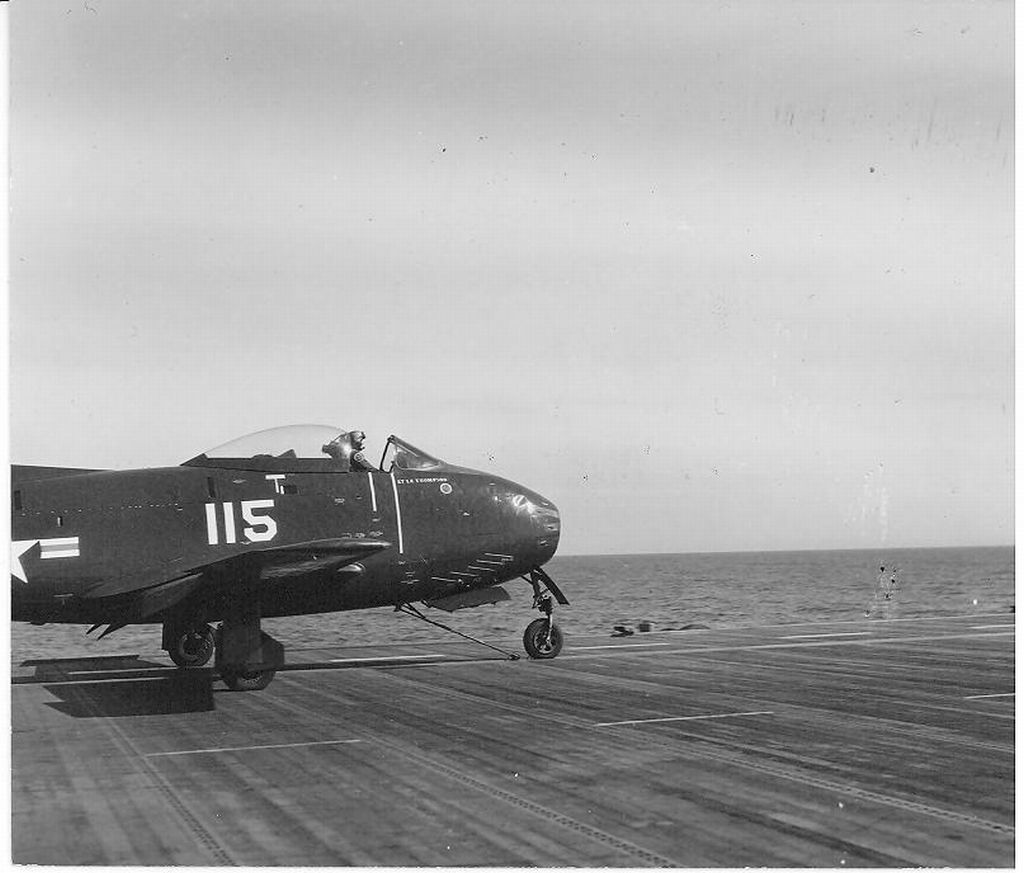

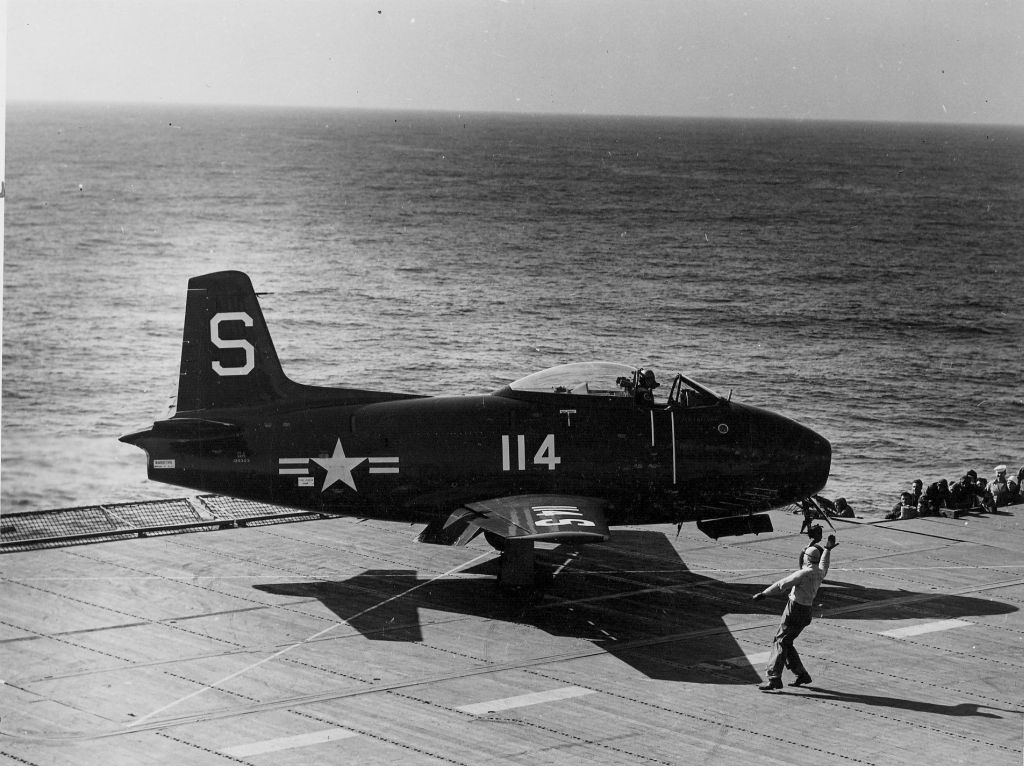
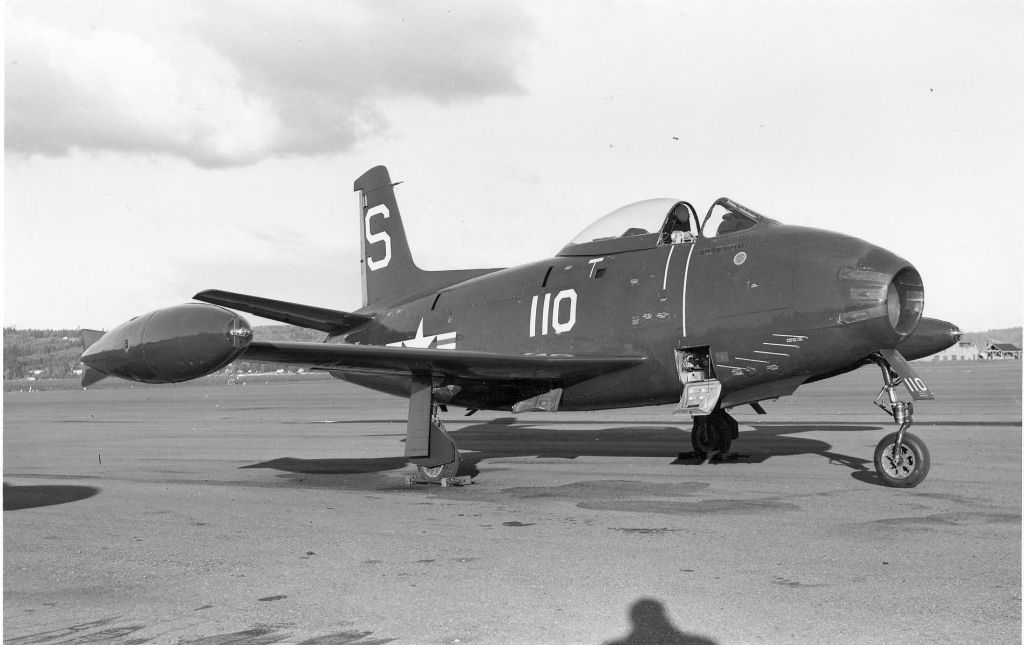
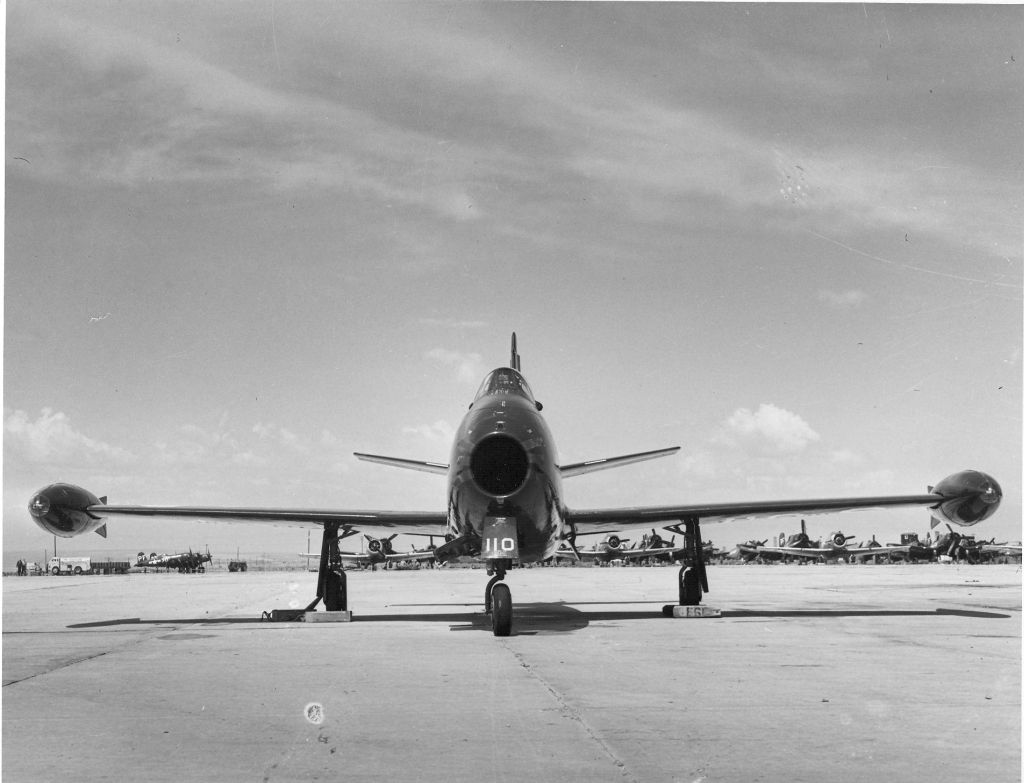
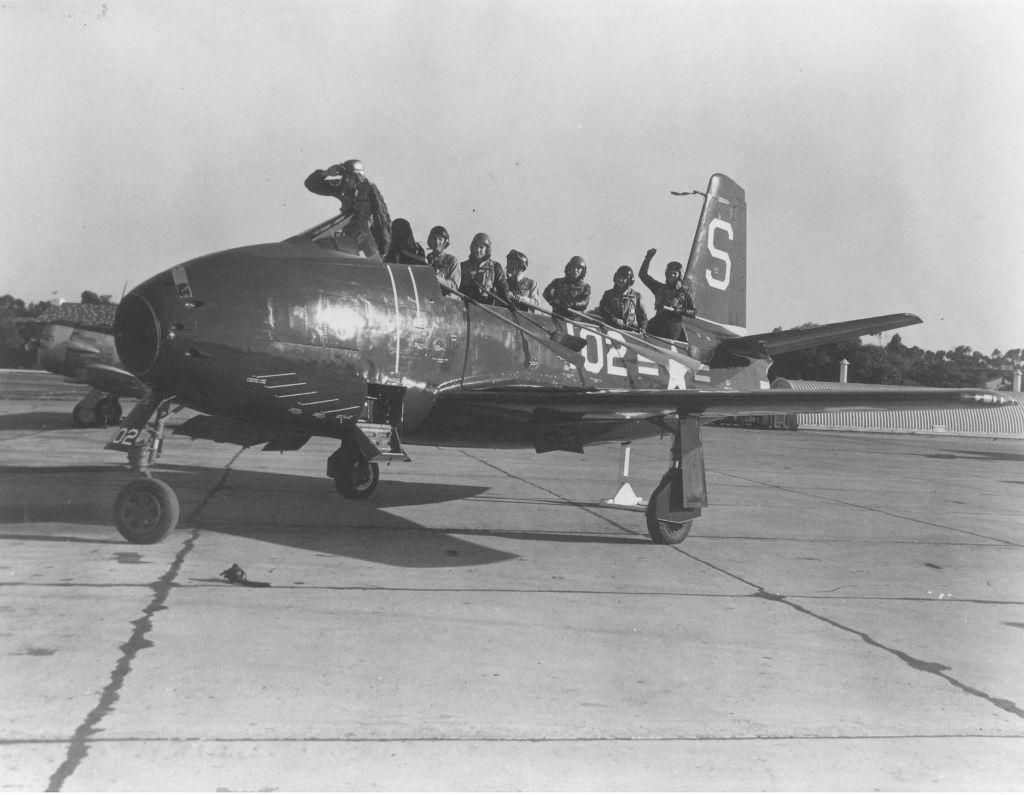
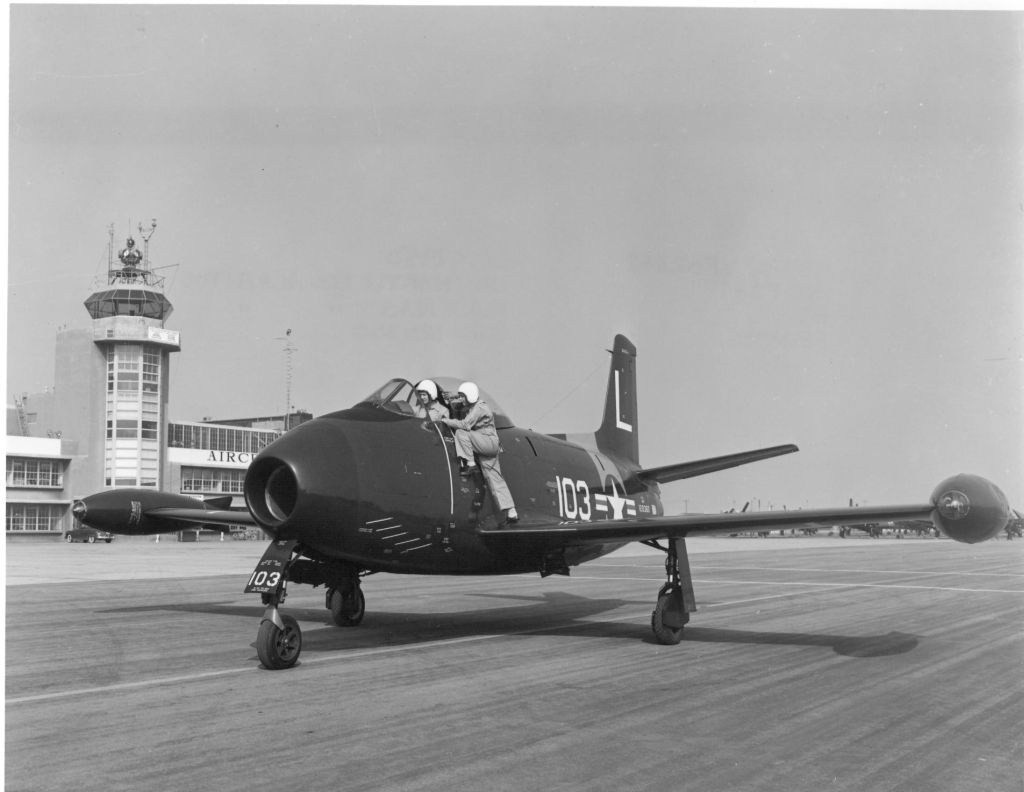
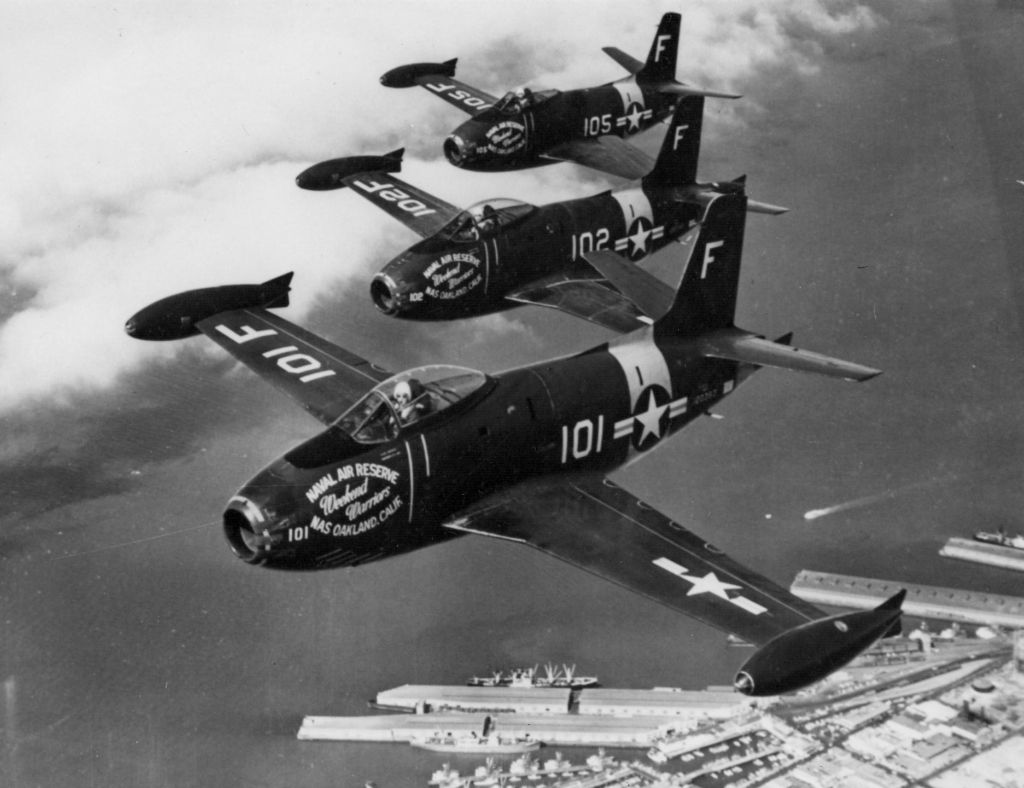

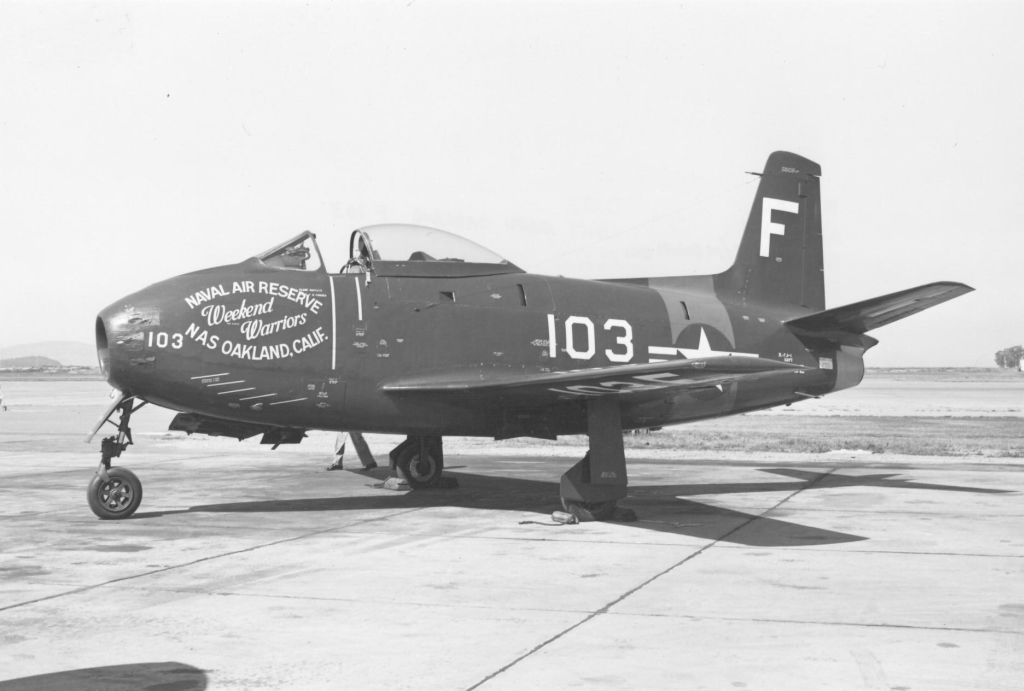
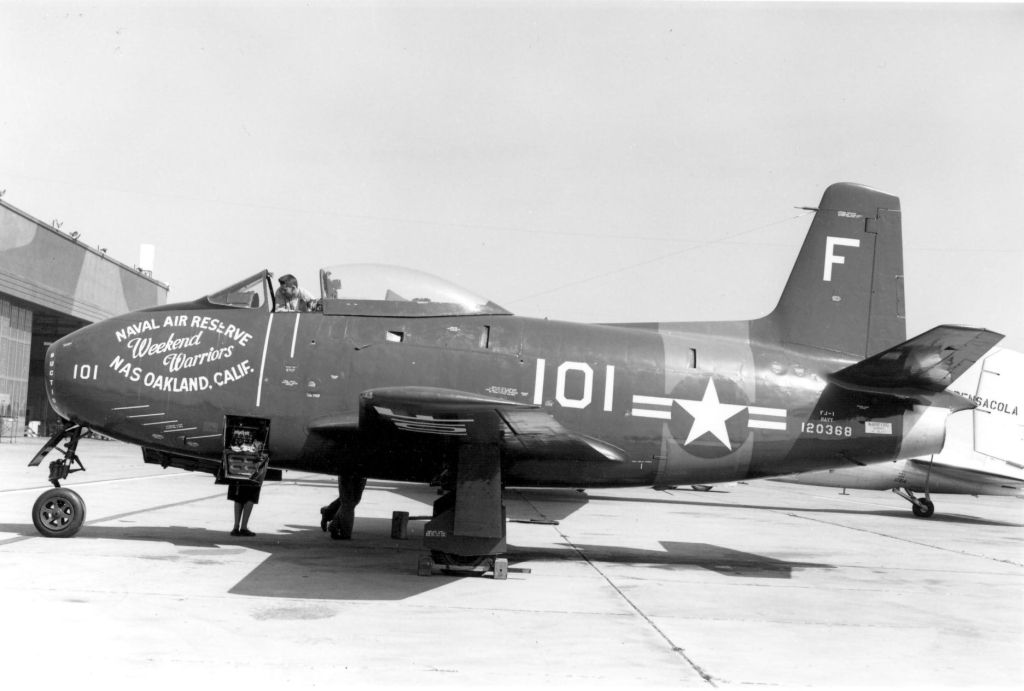
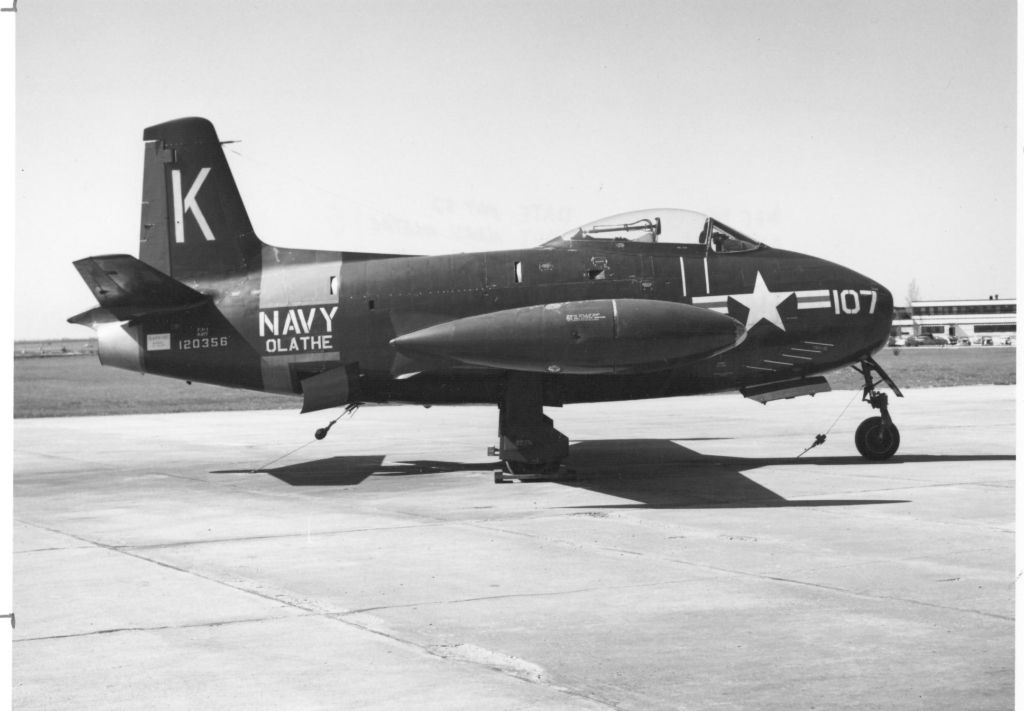
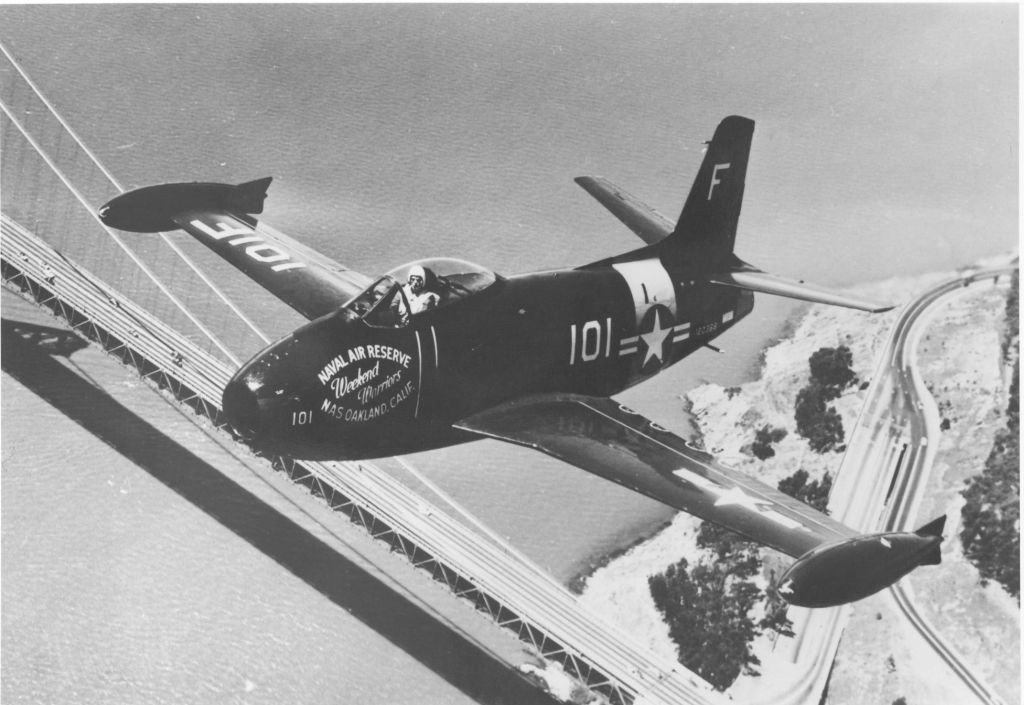
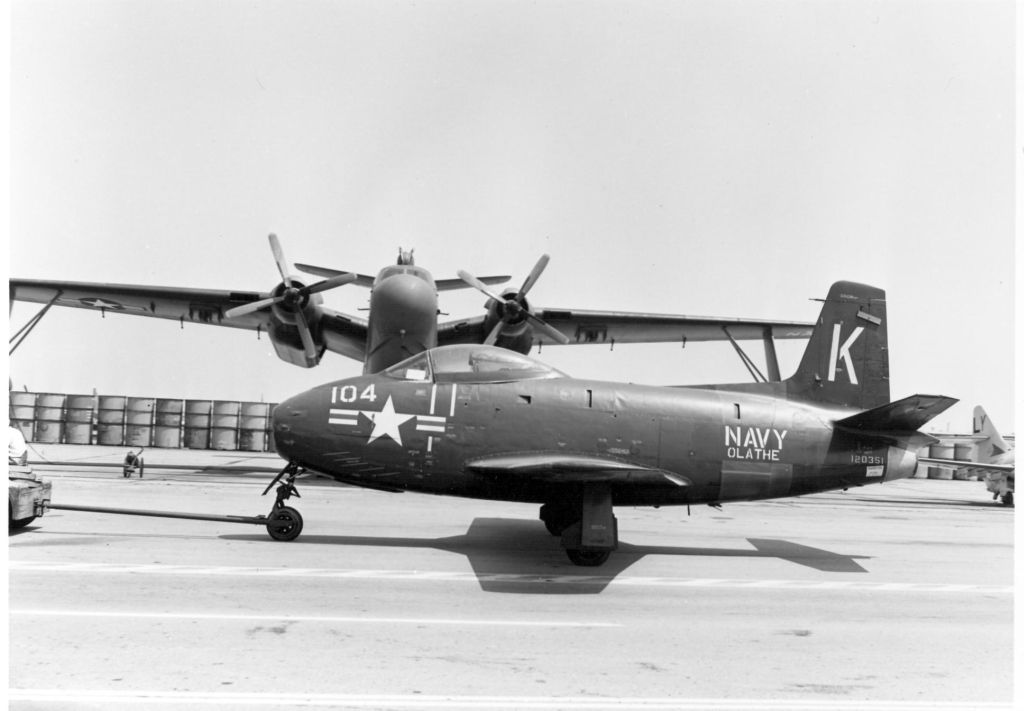
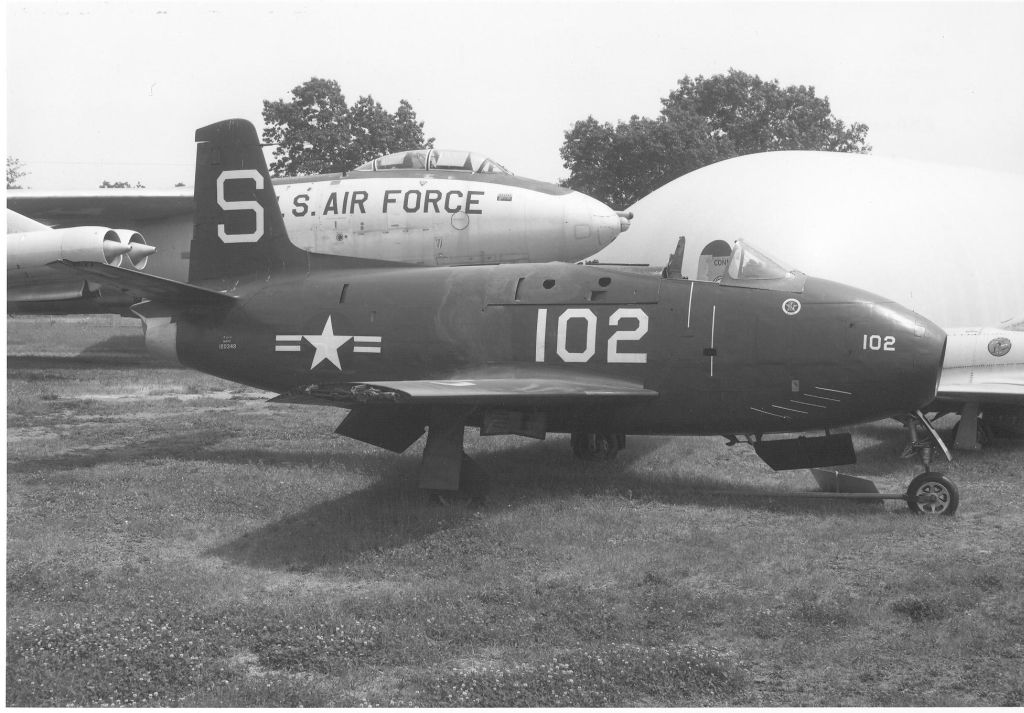

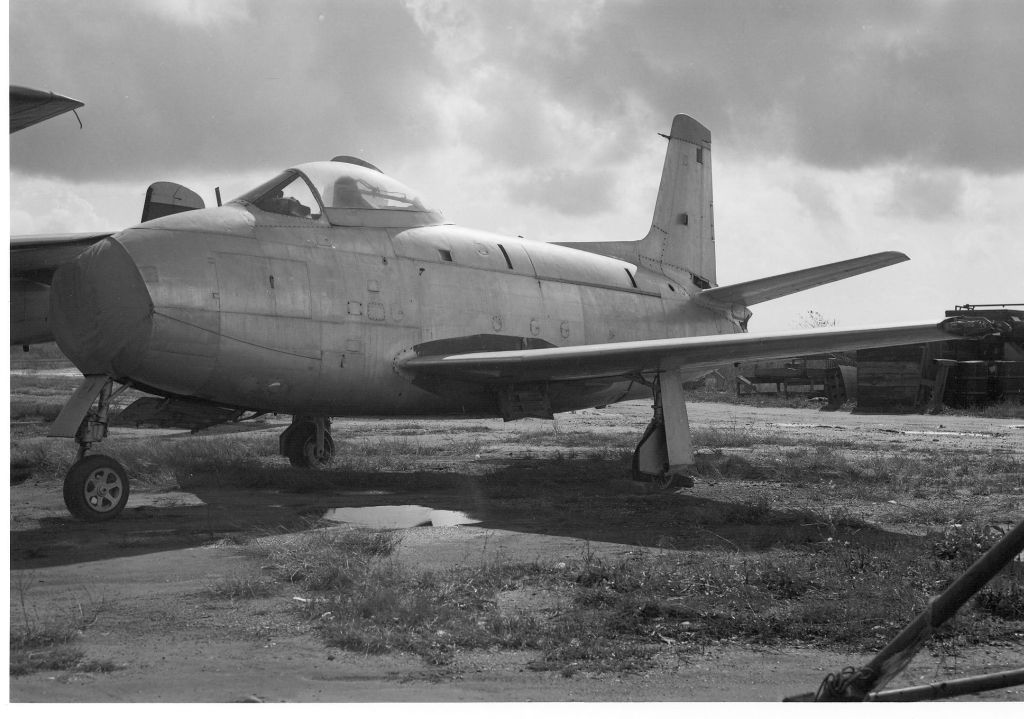
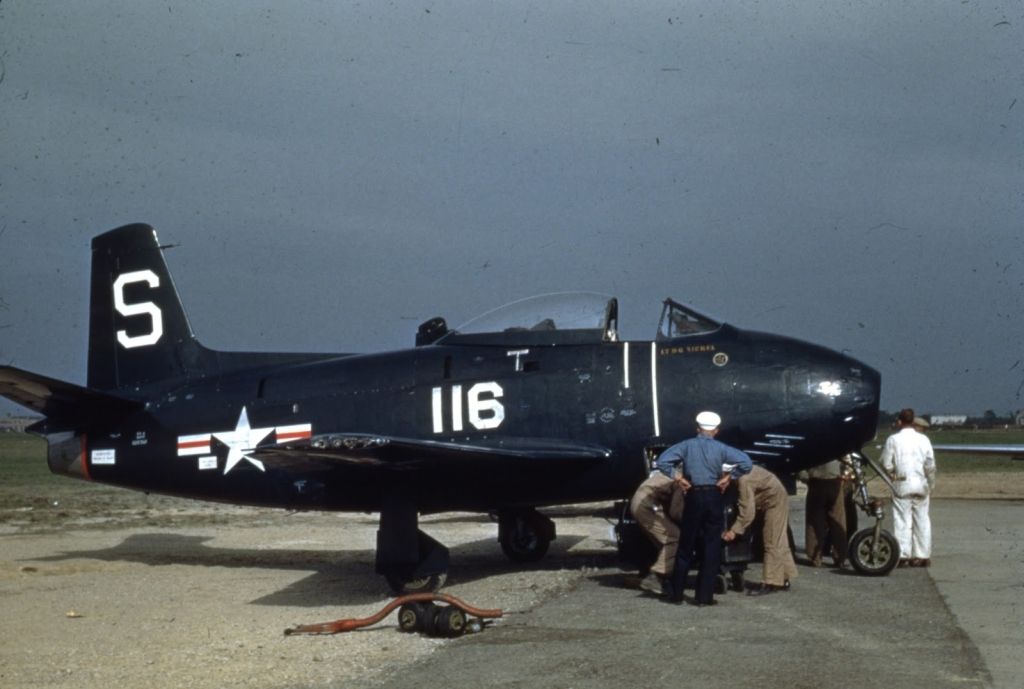
As usual right click.
Regards Duggy
Post a reply
- Go to Previous topic
- Go to Next topic
- Go to Welcome
- Go to Introduce Yourself
- Go to General Discussion
- Go to Screenshots, Images and Videos
- Go to Off topic
- Go to Works in Progress
- Go to Skinning Tips / Tutorials
- Go to Skin Requests
- Go to IJAAF Library
- Go to Luftwaffe Library
- Go to RAF Library
- Go to USAAF / USN Library
- Go to Misc Library
- Go to The Ops Room
- Go to Made in Germany
- Go to Campaigns and Missions
- Go to Works in Progress
- Go to Juri's Air-Raid Shelter
- Go to Campaigns and Missions
- Go to Works in Progress
- Go to Skinpacks
- Go to External Projects Discussion
- Go to Books & Resources
